The 5 Biggest Challenges for Smart Factories (and Tips to Tackle Them)
An Intel survey of 400 manufacturing experts on the front lines looks at what it will take to clear Industry 4.0's highest hurdles.
Irene J. Petrick, Faith McCreary DEC 20, 2019 from IndustryWeek
With the increasing proliferation of data, connectivity, and processing power at the edge, the industrial Internet of Things (IIoT) is becoming more accessible. However, successful adoption remains out of reach for many: two of every three companies piloting digital manufacturing solutions fail to move into a large-scale rollout. Why is it that, despite enthusiasm for this transformation to a digital manufacturing future, few companies have realized its potential at scale?
We already know that AI and IoT at the edge are critical to the acceleration of factory transformation, but what is required to catalyze more rapid adoption of these technologies and avoid the pitfalls of pilot purgatory?
In the past two years, we have embarked on a study of over 400 participants across the industry and ecosystem companies, engaging manufacturing leaders and workers, as well as the technologists that develop the solutions and services that support them. To answer this very question and uncover the essential ingredients of industry 4.0. In 2018, we released Phase One of the study, identifying key issues that manufacturing leaders and factory workers are grappling with as they evolve together on the path to the intelligent factory future.
We’ve just released the next phase of this work, Accelerate Industrial, looking at how workers will adapt and react to AI in manufacturing roles, and what strategies and tactics will “accelerate the accelerators.” To date, this phased study represents the most comprehensive view of digital transformation happening in the manufacturing sector.
All Phase Two participants were required to have a first-hand role in a smart factory or a company that develops smart technologies, solutions, or services, encompassing the full spectrum of points of view across development, deployment, and maintenance of the technologies within those four walls.
Our research found that while there is a big appetite for digital transformation, 83% of companies say they plan to make investments in smart factory technologies in the next two to three years. The people who are the most likely to drive that change are frequently uncertain about how to move forward or hesitant to risk it. So, what accounts for this failure to launch or to scale? And how should leaders shift the cultural mindset within their organizations to reap the benefits of industrial IOT?
Here are the top five challenges, cited by respondents, that have the potential to derail investments in smart solutions in the future and tips for avoiding the perils of pilot purgatory:
Challenge #1: Technical Skills Gap
36% cite a “technical skill gap” that prevents them from benefiting from their investment.
To successfully implement new technology and maintain operations, a company must have a workforce that possesses “digital dexterity.” The people must understand both the manufacturing processes and the digital tools that support those processes.
Solution:
- Create programs that support lifelong learning among the existing workforce, that combine new concepts with hands-on opportunities to use them in the context of manufacturing operations; build modules that are linked so that employees develop and hone their skills over time as they become proficient
- Offer instruction in digital tools and skills (considered important today, but critical for the future). Be holistic in the content by including cybersecurity, infrastructure, AI, data, storage, and compute needs. Present individual concepts and their interdependencies.
- Emphasize problem assessment and problem solving before solution implementation
- When standing up a new smart technology project, balance hiring external experts and internal staff to grow your company’s digital dexterity
Challenge #2: Data Sensitivity
27% cite “data sensitivity” from increasing concerns over data and IP privacy, ownership, and management.
To successfully implement an AI algorithm, for example, requires that there is data to train it and test it. This means that data must be shared, yet many companies are unwilling to share their data with third-party solution developers. There is also a strong belief that our current data governance policies for internal use within the organization are inadequate to support cross-organizational data sharing.
Solution:
- Formalize data sharing policies for within-organizational data transfer and between-organizational data transfer
- Establish data governance policies that reflect the value of sharing data with potential risk exposure. Understand that a one-size-fits-all policy will not suffice. Embed customized plans in future supplier/vendor contracts
- Consider data sharing needs before standing up a smart project and build in time to negotiate these needs into project operations
Challenge #3: Interoperability
23% say a lack of interoperability between protocols, components, products, and systems.
Interoperability is an ongoing struggle that is not new. Today, however, companies are becoming more frustrated with this interoperability as it limits their ability to innovate. It also limits their ability to upgrade system components, since they cannot easily “swap out” one vendor for another or one part of the system for another.
Solution:
- Aggressively pursue and support standards development to increase interoperability; whenever possible, participate in consortia such as the Open Process Automation Forum.
- Demand that their vendors work closely together to develop and implement solutions that stress modularity and that offer paths to upgrades over time using multiple vendor solutions.
- Consider open-source options when standing up smart technology projects.
Challenge #4: Security
22% cite security threats, both in terms of current and emerging vulnerabilities in the factory.
The combination of physical and digital systems in a smart factory makes real-time interoperability possible, but it comes with the risk of an expanded attack surface. With numerous machines and devices connected to single or multiple networks in the smart factory, vulnerabilities in any one of those pieces of equipment could open the system to attack. Companies will need to anticipate both enterprise system vulnerabilities and machine level operational vulnerabilities. Companies are underprepared to deal with these security threats, and many rely on their technology and solution providers to do this.
Solution
- Combine OT and IT professionals in smart project teams to assess possible vulnerabilities. Identify people, process, machine, and network threats
- Understand the upgrades vendors introduce into equipment and/or operations and anticipate possible changes to vulnerabilities
- Develop “corner case” analyses where no one alternative or feature may be a critical vulnerability but where the interdependencies between other options and/or features introduce or increase vulnerabilities. Plan for these nonobvious cases.
Challenge #5: Handling Data Growth
18% cite handling data growth in amount and velocity as well as sense-making.
As AI usage expands, companies will be faced with more data, being generated at a faster pace, and in multiple formats. AI algorithms need to be easier to comprehend i.e., how does the algorithm arrive at a recommendation? These algorithms must be able to combine data that is often of different types and timeframes.
Solution:
- Understand the data that yields business value insights and balance computing at the asset level; bandwidth; and the need for real-time (low latency) control feedback.
- Anticipate sampling rates that reflect changes to machine or operational status. Collecting everything may not make sense.
- Develop a robust system architecture before implementation that balances compute needs and the location of those needs (edge versus cloud, for example), storage requirements today and into the future, and communications infrastructure.
Irene Petrick is the senior director of the Industrial Innovation Internet of Things Group at Intel. Faith McCreary is a principal engineer in User Experience at Intel.
- Details
- Category: Inside TRIZ
The 10 Top Skills That Will Land You High-Paying Jobs by 2020, According to the World Economic Forum
They surveyed 350 executives across 9 industries in 15 of the world's biggest economies --- the answers may surprise you.
By Melanie Curtin Writer, activist@melaniebcurtin
Professional development: it's not always clear what to focus on. Should you go to a coding bootcamp? Invest in a social media marketing course? Attend a communications training? What should you do to help you excel in your current job -- or prepare you for your next one?
According to the World Economic Forum (WEF), the answer is simple.
The WEF recently surveyed 350 executives across 9 industries in 15 of the world's biggest economies to generate The Future of Jobs. The report intended to predict how technological advancement will transform labor markets. In other words, how will technology impact employers, and therefore, what they'll want from employees?
In a world increasingly dominated by robots, artificial intelligence, and virtual reality, having a firm grasp of what employers will be looking for is smart. Interestingly, more than 33% of the skill sets listed are not yet considered important by employers. They may not be on their radar now--but they will be.
The top 10 skills that will be most desired by employers by 2020:
- Cognitive flexibility
This involves creativity, logical reasoning, and problem sensitivity. It also means being able to adapt to how you communicate based on who you're talking to. Employers want to know you don't just say the same thing to everyone -- that you think critically about who you're talking to, deeply listen, and tailor communication to that person.
- Negotiation skills
This will be in especially high demand in computer and math jobs, such as data analysis and software development. It will also be critical in the arts and design (including commercial and industrial designers).
- Service orientation
This was defined as actively seeking ways to help others. How much do you assist those on your team, your superiors, and people across your industry? How much are you known for that?
- Judgment and decision-making
As organizations collect more and more data, there will be an even greater need for workers who can analyze it and use it to make intelligent decisions. Good judgment also involves knowing how to get buy-in from a colleague, or making a strong suggestion to a manager (even if it might not make you popular).
- Emotional intelligence
Robots can do a lot, but they still can't read people the way other humans can (at least not yet). Employers will place a strong emphasis on hiring those who are aware of others' reactions, as well as their own impact on others.
- Coordinating with others
Again, this falls under the social skills umbrella (sensing a trend?). It involves being able to collaborate, adjust in relation to others, and be sensitive to the needs of others.
- People management
In the report, this included being able to motivate people, develop the talents and skills of employees, and pick the best people for a job. This will be especially in demand for managers in the media and energy industries.
- Creativity
In 2015, creativity ranked 10th on the list. It's now one of the top three skills employers will seek. Why? Because as we're bombarded by new technologies, employers want creative people who can apply that tech to new products and services.
- Critical thinking
As automation increases, the need for humans who can employ logic and reasoning increases. This is, in part, because machines must be directed ethically and optimally. Employers want people with critical minds who can evaluate the uses or abuses of the power of technology, and use them to benefit the company, the people in it, and the future.
- Complex problem-solving
Technology can make life easier, but it can also make things more complicated. For example, you could use wearables to help map the walking patterns of nurses and doctors in a hospital to see how to make things more efficient. But without a human being analyzing those results while also having intelligent conversations with nurses, doctors, and patients, you will likely end up with a wrong or even dangerous result.
The report shows that 36% of all jobs across all industries will require complex problem-solving abilities as a core skill by 2020.
- Details
- Category: Inside TRIZ
TRIZ Plus – A Modern Tool for Enhancing Design Innovation
Mar 24, 2015 Douglas Hoon | Machine Design
TRIZ, an acronym for a Russian phrase loosely translated as the “Theory of Inventive Problem Solving,” has received little mention in Machine Design over the years. There were half a dozen articles in the 2000-02 timeframe, about a decade after it made its first U.S. appearance. Bradford Goldense, president of Goldense Group Inc. and a regular Machine Design contributor, mentioned TRIZ in his writings twice--once in 2006 and again in 2013. And, it showed up in a Letter to the Editor commenting on a 2010 article on innovation. These findings, in my experience, are typical of most trade magazines.
In a recent telephone call with Mr. Goldense, I asked about his 2013 column wherein he identified TRIZ as one of 300 innovation tools being used by manufacturing and high-tech firms in the U.S. According to his firm’s research in 2008, about 21% of the companies surveyed are either “aware” of TRIZ, “use it occasionally,” or have “fully embedded it” into their innovation process. At 21%, TRIZ ranked No. 4 in popularity among the 300 tools studied. He believes little has changed as of 2015. More importantly, Brad described TRIZ as the “most powerful tool for an individual user to enhance design innovation” among all the tools and techniques that exist. A powerful endorsement!
Related
A systematic way to solve technical problems
Which Comes First: Invention or Innovation?
Late Stage Design Changes Without Reinventing the Wheel
Given its potential impact on the ability of engineers and scientists to create novel new products, this lack of attention in most current industry trade magazines, including Machine Design, is surprising.
I was first exposed to TRIZ in 2008 and have become a strong advocate since. The classic version of TRIZ was all about solving a particular problem, even if it was the wrong one. Great progress has been made over the past two decades, however, as a flood of Russian practitioners moving to the West have modified TRIZ to work within a capitalistic environment where market forces and profitability matter. In its most advanced form, whether as an embedded tool in software or applied manually, TRIZ promotes use of a market-driven scientific problem-solving approach, minimizing dependence on individual “moments of inspiration.” This more modern version, call it “TRIZ Plus,” promotes innovation by:
- Ensuring you’re working on the right product in your portfolio, so you maximize ROI on the firm’s R&D budget.
- Identifying product features that will affect your customers’ buying decisions, so your efforts lead to innovations which create higher margins on your products or greater market share.
- Focusing on functions rather than system components, opening up a much broader range of potential solutions, some well outside your traditional knowledge base. This is also useful in helping you overcome “psychological inertia,” that is, practices which narrow your approach to the same channels you’ve traditionally used.
- Addressing underlying root causes – key problems – rather than the initial problem you may have been presented.
- Helping you resolve technical and physical contradictions rather than simply looking for an acceptable compromise between competing system demands.
- Making it easier to leverage global knowledge that can be accessed via the internet or elsewhere through a function-oriented search algorithm.
- Encouraging the adaptation of proven solutions from other industries that can be adapted to your particular needs whenever possible, rather than inventing from scratch.
- Identifying trends that suggest evolutionary winners.
Each of these benefits deserves a more lengthy explanation and will be discussed in a future post.
TRIZ Plus is a tool every engineer and scientist should have in his or her toolkit.
- Details
- Category: Inside TRIZ
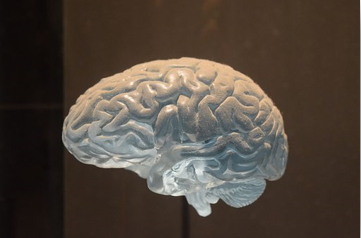
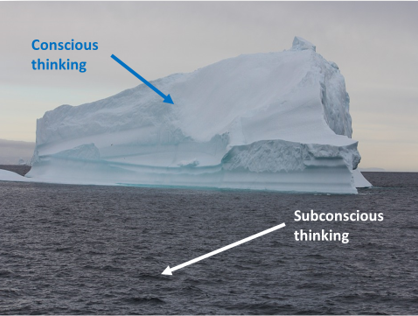
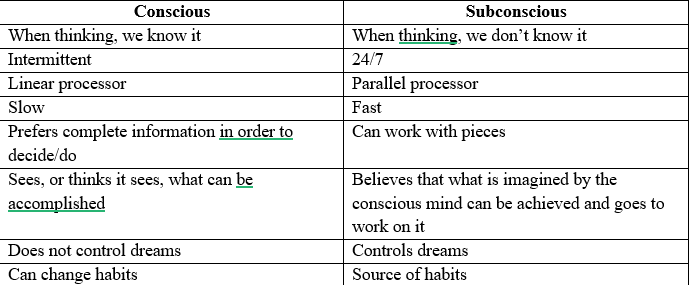
- Details
- Category: Inside TRIZ
Read more: OUR CONSCIOUS AND SUBCONSCIOUS MINDS: A POWERFUL DUO -1
STEAM from the Gridiron
Kanoe Namahoe, October 25, 2017,Education ,Connected Teaching and Learning
Photo courtesy of 49ers STEAM Education
What happens when students experience science, technology, engineering, arts and math through lessons about football?
Practical learning, says Jesse Lovejoy, director of STEAM education and the San Francisco 49ers Museum. "Sports are generally understood and compelling," says Lovejoy. "They also happen to be a great lens through which to examine the subjects of STEAM or any other subject really."
Lovejoy coordinates the 49ers STEAM education program, launched in 2014 at Levi's Stadium. The initiative, part of the 49ers Foundation that serves K-8 students in Bay Area schools, aims to provide students with a real-world look at STEAM using the concepts of football.
I spoke with Lovejoy about what it takes to capture students' interest and open their eyes to the possibilities in STEAM fields. Here are some of his top tips:
Make it relatable. Sports make sense to students, even to those who are not athletes, says Lovejoy. "What we have in the game of football is this really simple and approachable idea," he says. "Sports -- whether kids like to play basketball, baseball, football or soccer, field hockey, swim or run -- they know what they are. They understand what it is."
More than half -- 56% -- of the students who attend the 49ers program come from Title 1 schools, according to reporting from Forbes. Many are young athletes for whom sports is their first language. Program activities -- such as math exercises around player stats -- help connect STEAM concepts to students' interests. The goal is to expose students to new opportunities that let them see how their passions connect to real life, says Lovejoy.
"Our mission [for] using this platform [is] as a way to change the way that kids perceive, relate to and want to explore these subjects," he says. "If we can reach these kids and be that moment of inspiration for them…[we want] to show them this is real life -- these are things you can approach through things that you love."
Speak about the job. It's time to redefine STEAM and help students understand it's not an "abstract concept that lives in a lab and wears a set of daisy glasses," says Lovejoy.
"Instead of speaking about the subject, speak about the job," he says. During their visit, students learn about different jobs at the stadium, including engineers, chefs, accountants, data analysts, football players and coaches, and how the work involved relates to STEAM. Lovejoy says the key is discussing these functions in practical terms students understand.
"When we're teaching engineering, I'll go in a classroom and tell a kid, 'Hand me something,'" he says. He explains how ordinary objects such as paper, pens or shoes are engineered and how that process helps continually improve those objects. Students also get to see how football helmets are built and how they have evolved over the years.
"And that whole idea is something kids are not usually presented with when it comes to the concept of engineering," Lovejoy says. "Making something better, making anything better."
Let them get their hands dirty. Hands-on activities are "very powerful for a child in terms of inspiring creativity and collaboration and critical thinking," says Lovejoy. He advises educators not to presume that students know what it means to be creative.
"You have to engage young people at a very primal and practical level to inspire creativity," says Lovejoy. "In some cases, you even have to tell them what it looks like and model it for them. I think they hear this word and think, 'Does this mean I draw something? What does this mean?' That's the first part."
The 49ers program uses technologies such as simulation and touch screens to deliver learning content but also places great emphasis on fostering creativity through project-based learning and tactile experiences. Activities such as creating face masks from straws and fitting them to helmets or using K'nex and wooden blocks to build a stadium help reinforce STEAM concepts, nudge students out of their comfort zones and let them develop creative muscles, says Lovejoy.
"For us, it's about putting things in the hands of young people, with the right information, and asking them to build something," says Lovejoy. "And intentionally doing that in a real-world environment and not in a digital environment. We want them to hold, touch and build. That, for us, has been very powerful."
Use process to teach job skills. Process is a valuable way to demonstrate practical application of STEAM concepts, says Lovejoy. Lessons about engineering begin by walking students through the steps of their day – from waking up to taking the bus to school -- so they can see how their activities connect.
"That is what's called a process," says Lovejoy. "Going through a process is what every single person does at their job every single day. Does that mean you're a scientist or mathematician? Not necessarily. But it means that you're employing the same principles that those people employ."
The exercise helps students identify the job skills needed for various STEAM-related careers. "When you start to think about the kinds of skills required to develop the capacity to become an electrician, to fix heating and ventilation and air conditioner equipment, these things are STEAM careers," says Lovejoy. "I think that's the start [of] getting out of this concept of STEAM as this really high-level concept for kids and breaking it down to relatable terms and occupations."
Fuel teacher enthusiasm for STEAM. The linchpin to a successful STEAM program is a committed, enthusiastic educator, says Lovejoy. To this end, the 49ers organization offers professional development to all teachers who participate in the STEAM education program. The half-day training sessions emphasize project-based learning and STEAM integration. All teachers return to their classrooms armed with lesson plans and access to additional resources. Lovejoy says 250 educators participated in the program last year.
"The most important part is the engagement, instruction, motivation and guidance of educators who care," says Lovejoy. "You cannot discount the importance of somebody in that room [who] will not let young people get away with giving mediocre effort -- [who] is not going to allow them to bail on the experience."
Kanoe Namahoe is the editor of SmartBrief on EdTech and SmartBrief on Workforce.
- Details
- Category: Inside TRIZ
 March 2012
March 2012 - Details
- Category: Inside TRIZ
Inside TRIZ
Innovation Management:
A Breakthrough Approach to Organizational Excellenc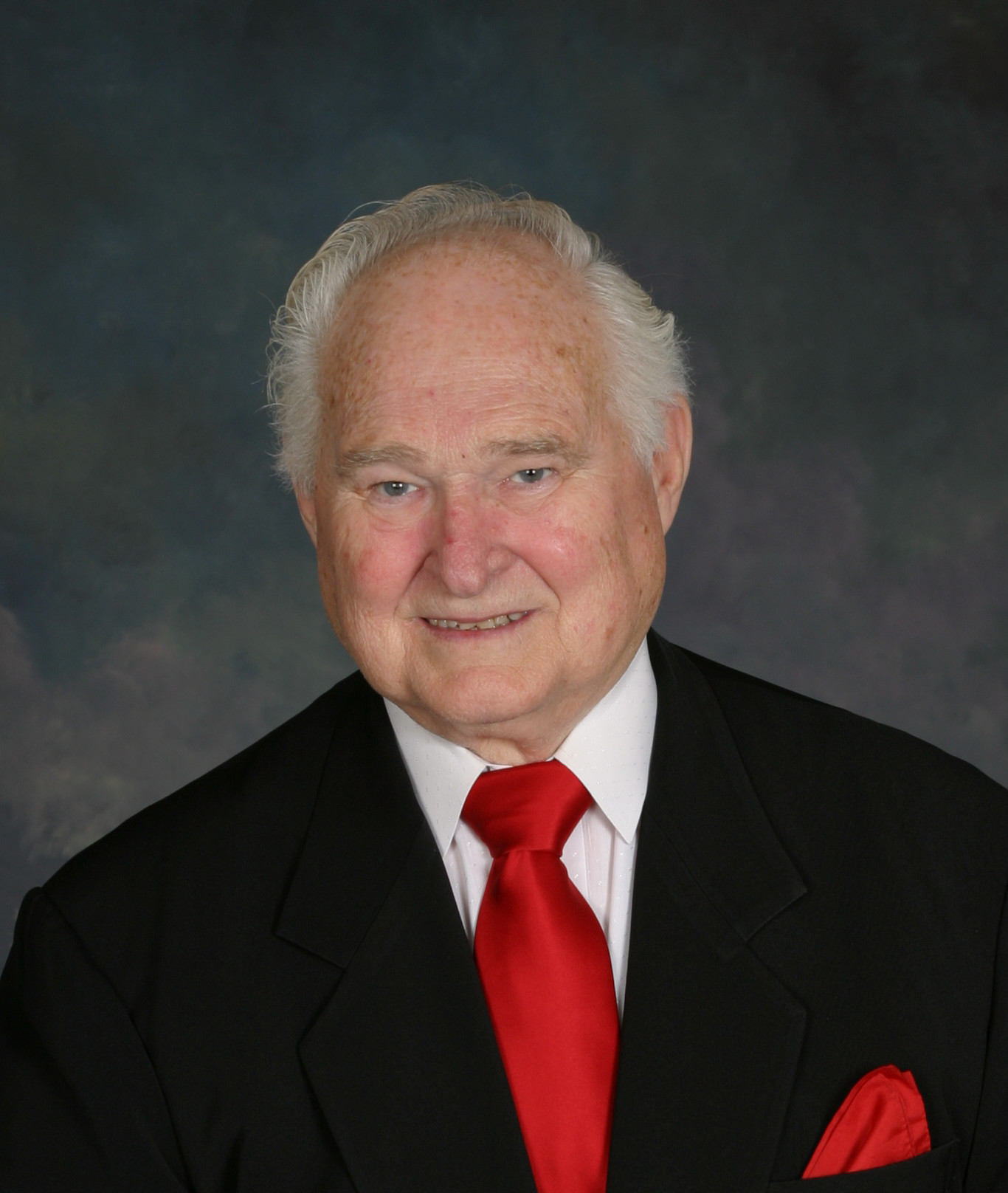
Part 1
by H. James Harrington and Frank Voehl
There is an ongoing need to explore opportunities and build a healthy and prosperous future, create new revenue streams and wealth, discover new solutions, and transform our organizations, industries, and societies. This need leads us to focus on innovation management. Through innovation management, order can be found in chaos, while nations, industries and economies can be pulled out of crisis. This will lead to a new foundation for growth and prosperity, which may be realized sooner rather than later.
- Details
- Category: Inside TRIZ

The objective of this paper is to present frameworks that can help companies address various strategic and tactical issues when considering adoption of GPD combining TRIZ (Theory of Inventive Problem solving), Customer value Proposition (CVP), and Set Based Concurrent Engineering (SBCE) pioneered by Toyota. Set Based Concurrent Engineering (SBCE) as a process for developing new products has started gaining traction for global product development. However, GPD projects are finding it difficult to adapt to SBCE process where time spent in the early phases of development typically is more. We propose in this paper how TRIZ & CVP based SBCE framework will make the GPD projects efficient, more robust and faster in many different GPD scenarios.
- Details
- Category: Inside TRIZ
Inside TRIZ

Navneet Bhushan
Law of Increasing Intelligence of Technical Systems
We discovered that human beings by collectively evolving their technical systems, are trying to make each technical system as close to a human being as possible - or at least a model of human being and its environment based on the current understanding of the world (for example, understanding of laws of physics and chemistry in making an automobile) and the current understanding of the system called the human being. As man understands the world around it as well as its body and its mind, it wants to create an "ideal man" or at least an idealized human of all technical systems it is creating. This is an unexpected discovery and may take the readers used to classical TRIZ, sometime to accept it.
Navneet Bhushan is a founder and director of CRAFITTI Consulting, an innovation consulting and research firm focused on co-crafting innovation in global enterprises. In his paper, Navneet makes some challenging conclusions about where and how ideal systems are evolving to.
- Details
- Category: Inside TRIZ
Read more: Law of Increasing Intelligence of Technical Systems
Inside TRIZ
 Quantifying the TRIZ Levels of Invention –
Quantifying the TRIZ Levels of Invention –
A tool to estimate the strength and life of a Patent
TRIZ (Theory of Inventive Problem Solving) classifies inventions into five novelty levels. At level 1 are slight modifications of the existing systems. At level 2 are those inventions that resolve a system conflict or contradiction using usually inventive solution or inventive principle used to solve similar problems in other systems. At level 3, the inventions change one subsystem or resolve the system conflicts in a fundamental way. At level 4, the invention gives birth to new systems using interdisciplinary approaches. The level 5 inventions are closer to a recently discovered scientific phenomenon. See article for a complete discussion.
- Details
- Category: Inside TRIZ

The objective of this paper is to present frameworks that can help companies address various strategic and tactical issues when considering adoption of GPD combining TRIZ (Theory of Inventive Problem solving), Customer value Proposition (CVP), and Set Based Concurrent Engineering (SBCE) pioneered by Toyota. Set Based Concurrent Engineering (SBCE) as a process for developing new products has started gaining traction for global product development. However, GPD projects are finding it difficult to adapt to SBCE process where time spent in the early phases of development typically is more. We propose in this paper how TRIZ & CVP based SBCE framework will make the GPD projects efficient, more robust and faster in many different GPD scenarios.
- Details
- Category: Inside TRIZ
Case Study: Applying Triz in a non-technical setting for a fuel-cell start-up
By Jean-Francois Denault
1. ABSTRACT
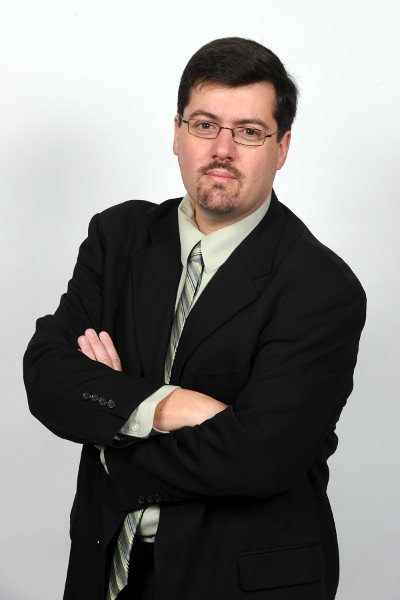 TRIZ is a systematic tool used to generate creativity and solve technical problems, but there is little litterature of its use in non-technical situations. This brings up the question: How can TRIZ be used to generate creativty and solve a non-technical problem?
TRIZ is a systematic tool used to generate creativity and solve technical problems, but there is little litterature of its use in non-technical situations. This brings up the question: How can TRIZ be used to generate creativty and solve a non-technical problem?
The objective of this experiment was to use TRIZ in a non-technical setting. As such, the article is very exploratory in nature. Working with a private company, we identified and defined a non-technical problem, and experimented with TRIZ to generate creativity in an attempt to solve the problem.
KEYWORDS: Creativity, Brainstorming, TRIZ, Problem Solving
Other authors have explored TRIZ in a non-technical perspective, they have mostly done so from a theoretical perspective. For example, Mann (1999) and Terninko (2001) did excellent work in developing examples of applications of Triz principles in non-technical settings. With this article, I wish to add to existing literature by developing a case study solving a tangible problem.
- Details
- Category: Inside TRIZ
Read more: CASE STUDY: APPLYING TRIZ IN A NON-TECHNICAL SETTING FOR A FUEL-CELL START-UP
TRIZ Feature
THE REAL WORLD: TRIZ in Two Hours for Undergraduate and Masters Level Students!
Dr. Paul R. Filmore
School of Computing, Communications & Electronics
University of Plymouth, UK
The reality of overloaded university syllabi is very limited time for introducing challenging and comprehensive concepts like TRIZ. This paper shares e
xperience and knowledge, based on five years of ‘teaching’ TRIZ in the UK. Key areas covered are:-
- Creating a need in the student to learn more e.g., demonstrate that TRIZ has more potential than student’s other present problem solving strategies
- Using an interesting learning case study; researched by the author with Michelin (USA): the Tweel™
- Reporting the use of a computer assessment based on the lecture and self study. The assessment focuses students to access an electronic TRIZ book, electronic resources and the internet, to self study greater understanding of TRIZ (NB this is one way to get around limited timetabled lecture time). Results from student perceptions of their understanding of TRIZ and of experiencing a rich learning environment, are also examined.
Results from undergraduate and MSc student cohorts who have undertaken a TRIZ learning experience designed around the above, demonstrate a high appreciation of the potential of TRIZ and a measurable level of understanding.
- Details
- Category: Inside TRIZ
Read more: THE REAL WORLD: TRIZ in Two Hours for Undergraduate and Masters Level Students!
Inside TRIZ
 Development of the Creativity and Formula of the
Development of the Creativity and Formula of the
Nontechnical Systems' Transformation Algorithm
by Eugene Chikov and Nikita Chikov
The article considers potential of caricature in the development of the creative thinking and reveals the structural model of the caricature creating process; it compares logical operations while solving inventive problems in techniques (Su-Field analysis) and while getting the new result within the context of the nontechnical system. This article also offers the formula of the nontechnical systems' transformation algorithm (solving of the nontechnical creative problem), which is common for all nontechnical systems.
Key words: Su-field analysis, nontechnical systems' transformation algorithm, creative thinking development
"The potential of trial-and-error approach is exhausted... That is why creation of the algorithms for solving technical, scientific and other tasks is not only possible, but also necessary. ARIZ will be followed by algorithms for solving the scientific and other tasks. The development of General Theory of Creative Problem Solving will inevitably be started some day. But now we are at the very beginning of our way."
G. Altshuller, A. Selutzkiy "Wings for Ikarus"
- Details
- Category: Inside TRIZ
Inside TRIZ
 April 2012
April 2012
Don Coates
Improving the Fuzzy Front End of Product Development for Continuous Innovation Incorporating TRIZ
Why have many legacy companies been unable to innovate continuously? A study of several famous companies that have stumbled in innovation reveals that it is not just one activity but a multitude of them that are not executed well. That is why "if it were easy everyone would be doing it." Innovation has been defined as invention brought to the market. The federal government has tried to measure innovation and found it very difficult. Work is ongoing to collect information on important factors for innovation but most measure factors that are results versus critical skills that drive innovation. A model for continuous innovation has been developed from a variety of sources, including the author's 40 years in the appliance industry. The model incorporates four key parts and arguably the most important part is problem solving and problem identification. This is where TRIZ plays a critical role since problems poorly solved or not solved lead to weak invention and innovation that can be trumped easily. The details of the model will be explained with associated forms that are useful for implementation.
- Details
- Category: Inside TRIZ
 December 2011
December 2011- Details
- Category: Inside TRIZ
Inside TRIZ
 February 2011
February 2011
Karthikeyen Iyer
Holistic Value Framework using TRIZ and other frameworks
This article from Karthikeyen Iyer, Crafitti Consulting, shows opportunities can be gained by using some of the lesser know tools of TRIZ. In this context, there are several techniques associated with TRIZ that can be beneficial. Function-based thinking and Ideality can help in creating an improved understanding of value (and thereby waste). Nine Windows can broaden the context and scope of value stream mapping to provide an end-to-end perspective. For more information click below.
- Details
- Category: Inside TRIZ
Inside TRIZ
 December 2010
December 2010
Isak Bukhman
This article comes to us from TRIZCON2005 and is a green related case study by our good friend and associate Isak Bukhman. Isak is currently President & Global Consultant of TRIZ Solutions LLC.
Wind turbines represent an attractive source of sustainable and environmentally friendly energy. World wind energy apacity has been doubling every three years during the last decade and growth rates in the last two years have been even faster. Yet the technology still needs a higher profile and greater efficiency.
Using the improvement of Wind Turbine Development as a case study, this presentation focuses on a proven and repeatable process that overcomes common TRIZ deployment challenges by showing a workflow and methodology for how to get started working on a problem with TRIZ, how to compliment TRIZ with Value Methodologies for problem identification, and how to leverage internal and external knowledge sources to accelerate concept identification.
- Details
- Category: Inside TRIZ
